#Micro Grid Systems
Explore tagged Tumblr posts
Text
Illuminating the Future - Solar Power Micro-Grid Systems
In an era where sustainability and energy independence are paramount, solar power micro-grid systems have emerged as a beacon of hope for communities, industries, and regions seeking reliable, resilient, and environmentally friendly energy solutions. These decentralized power networks leverage solar energy to not only provide electricity but also boost efficiency, enhance reliability, and reduce the carbon footprint. In this article, we'll explore the world of solar power micro-grid systems, delving into their components, benefits, applications, and their pivotal role in shaping a greener future.

The Anatomy of Solar Power Micro-Grid Systems
Solar power micro-grid systems are intricate yet highly efficient energy ecosystems. They comprise several essential components that work harmoniously to provide clean and sustainable electricity:
Solar Panels: At the heart of the system are solar panels, which capture sunlight and convert it into electricity. These panels are usually installed on rooftops, in open fields, or on other suitable surfaces.
Inverters: Inverters play a crucial role in converting the direct current (DC) generated by solar panels into the alternating current (AC) required for electrical devices.
Battery Storage: Energy generated by the solar panels is stored in a battery system. Deep-cycle batteries are commonly used for their ability to store energy efficiently.
Controller: A charge controller regulates the flow of energy from the solar panels to the batteries, preventing overcharging and extending battery life.
Distribution System: The micro-grid includes a distribution system to transmit electricity to end-users, whether they are residential, commercial, or industrial consumers.
The Benefits of Solar Power Micro-Grid Systems
Reliability: Solar power micro-grids provide a reliable source of electricity, even during power outages or unfavorable weather conditions. This reliability is crucial for critical facilities like hospitals, schools, and emergency response centers.
Efficiency: Micro-grids enhance energy efficiency by optimizing power supply and demand, reducing waste, and minimizing grid strain.
Energy Independence: Communities and businesses that deploy solar power micro-grids reduce their dependence on centralized power grids, enhancing their energy independence.
Environmental Sustainability: By harnessing the sun's energy, micro-grid systems significantly reduce carbon emissions and contribute to a cleaner environment.
Economic Benefits: Over time, solar power micro-grid systems lead to cost savings, as they reduce energy expenses and decrease reliance on fossil fuels, which are subject to price fluctuations.
Applications of Solar Power Micro-Grid Systems
Rural Electrification: Solar power micro-grids are a lifeline for remote areas and villages with unreliable or no access to centralized power grids.
Industrial Facilities: Manufacturers and industrial plants rely on these systems for uninterrupted operations and cost-effective energy supply.
Residential Communities: Housing developments and gated communities can achieve energy independence and a sustainable lifestyle through solar power micro-grids.
Educational Institutions: Schools and universities benefit from reliable power supply and reduced energy costs.
Emergency Response: Emergency response centers and disaster management facilities depend on micro-grids for continuous power, even during crises.
The Future of Solar Power Micro-Grid Systems
As technology advances and environmental concerns grow, the future of solar power micro-grid systems appears brighter than ever. These systems are poised to play a pivotal role in shaping a more sustainable, efficient, and resilient energy landscape. They are not just local solutions; they are integral to a global shift toward cleaner, greener energy practices. Solar power micro-grids are the path to a more sustainable and illuminated future for us all.
1 note
·
View note
Text
Breaking Barriers: The Challenge of Electrification in Remote Areas
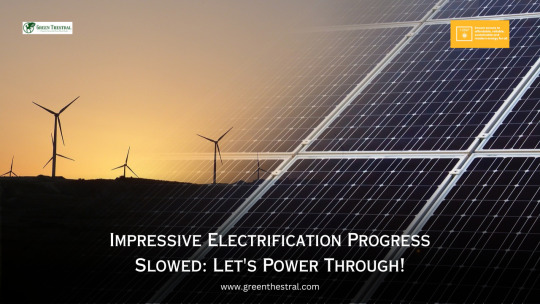
In today's rapidly evolving world, the importance of electrification cannot be overstated. Access to electricity is a cornerstone of modern living, enabling progress in education, healthcare, communication, and economic development. Over the past few decades, remarkable strides have been made in electrification efforts, but there remains a significant challenge in reaching the hardest-to-reach areas. This article explores the obstacles hindering impressive progress in electrification and sheds light on the efforts being made to overcome these challenges.
The Significance of Electrification
Electrification is a critical component of building sustainable and inclusive societies. It enhances the quality of life for people in both urban and rural areas, enabling them to access vital services and technologies. Electricity facilitates the functioning of schools, hospitals, industries, and communication networks, empowering communities to thrive and participate in the global economy. However, despite its transformative power, millions of people around the world still lack access to electricity.
The Impressive Progress
In recent years, electrification efforts have achieved remarkable progress. Governments, non-profit organizations, and private companies have collaborated to expand electricity access to remote and underserved regions. The adoption of renewable energy sources, such as solar, wind, and hydro power, has played a significant role in bringing electricity to areas with limited infrastructure. Additionally, advancements in technology and innovative micro-grid systems have made it possible to overcome geographical barriers and provide energy solutions to previously inaccessible locations.
Challenges in Reaching the Hardest-to-Reach
While impressive progress has been made, electrification in remote areas faces formidable challenges. Some of the key obstacles include:
Geographical Barriers: Many remote regions are situated in rugged terrains, such as mountains, forests, or deserts. Building and maintaining traditional power infrastructure in these areas can be prohibitively expensive and logistically challenging.
Lack of Infrastructure: Remote regions often lack basic infrastructure like roads and transportation networks, making it difficult to transport materials and equipment needed for electrification projects.
Affordability: In impoverished regions, the cost of setting up and maintaining electricity infrastructure can be a burden for both the communities and the providers.
Political and Social Instability: In certain areas, political conflicts and social unrest can hinder progress in electrification efforts, discouraging potential investors and disrupt ongoing projects.
Environmental Concerns: Balancing the need for electrification with environmental conservation is crucial. Some remote areas are ecologically sensitive, and care must be taken to ensure sustainable and eco-friendly energy solutions.
Solutions and Initiatives
Despite the challenges, numerous initiatives are actively working to bring electricity to the hardest-to-reach regions. These efforts include:
Off-Grid and Micro-Grid Systems: Off-grid solar systems and micro-grids provide localized and decentralized energy solutions, bypassing the need for extensive infrastructure. They can be tailored to suit the specific energy demands of a community.
Mobile Technology: Mobile technology has become a powerful tool in facilitating electrification. Mobile payment platforms and smart grids help manage energy distribution efficiently.
Public-Private Partnerships: Collaborations between governments, non-governmental organizations, and private companies have proven effective in pooling resources and expertise to tackle electrification challenges.
Miniaturized Technologies: Technological advancements have led to the creation of compact and efficient energy solutions, such as portable solar panels and mini wind turbines, making them suitable for deployment in remote areas.
Community Engagement: Empowering local communities to take ownership of electrification projects fosters a sense of responsibility and sustainability.
Conclusion
Impressive progress in electrification has undoubtedly improved the lives of millions, but there is still much work to be done to reach those hardest-to-reach areas. The challenge of electrifying remote regions requires innovative solutions, collaborative efforts, and a commitment to sustainable development. As technology continues to advance and awareness grows, there is hope that the barriers hindering electrification will gradually crumble, lighting up the lives of those who have remained in the dark for far too long. It is essential for governments, organizations, and individuals to come together and invest in electrification as a means of driving positive change, fostering economic growth, and leaving no one behind in the pursuit of a brighter and sustainable future.
What's In It For Me? (WIIFM)
Are you curious about the state of electrification in remote areas and the challenges hindering its progress? Discover how impressive efforts to bring electricity to the hardest-to-reach regions impact global development, the environment, and the lives of millions. Learn about innovative solutions and initiatives that can transform the future of those in need, while contributing to a sustainable and inclusive world.
Join the Movement: Let's Light Up Lives Together!
Be a part of the electrification revolution! Help us overcome the challenges of reaching remote areas with electricity. Share this article to spread awareness and inspire others to support electrification efforts. Together, we can make a difference and empower communities worldwide. Click here to learn more about how you can get involved and contribute to this meaningful cause.
Blog Excerpt
The quest for electrification in remote and underserved areas has seen impressive strides, yet it faces significant challenges that slow its progress. Access to electricity is pivotal in shaping modern living, but millions of people still lack this essential resource. This article delves into the obstacles hindering electrification, including geographical barriers, lack of infrastructure, and affordability issues. We explore the solutions and initiatives driving change, such as off-grid and micro-grid systems, mobile technology, and community engagement. By addressing these challenges head-on, we can create a brighter and sustainable future for all.
Meta Description (320 characters)
Discover the challenges impeding impressive progress in electrification efforts to reach remote areas. Explore innovative solutions and initiatives, empowering communities and transforming lives worldwide.
#Impressive progress in electrification#Electrification challenges in remote areas#Hardest-to-reach electrification solutions#Sustainable electrification initiatives#Impact of electrification on global development#Electrification and environmental conservation#Access to electricity in underserved regions#Off-grid and micro-grid systems for remote areas#Mobile technology in electrification#Empowering communities through electrification#Innovations in remote electrification#Affordable electrification solutions#Overcoming geographical barriers in electrification#Advancements in off-grid technology#Micro-grids for remote communities#Electrification challenges and opportunities#Electrification and socio-economic development#Renewable energy in remote areas#Empowering the hardest-to-reach regions#Progress in electrification initiatives#Electrification impact on education and healthcare#Electrification projects in challenging terrains#Sustainable energy solutions for remote regions#Innovations in rural electrification#Electrification's role in community empowerment#Social impact of electrification efforts#Challenges in electrification funding#Remote electrification and climate change#Importance of electrification access for all#Addressing electrification disparities
0 notes
Note
whats wrong with ai?? genuinely curious <3
okay let's break it down. i'm an engineer, so i'm going to come at you from a perspective that may be different than someone else's.
i don't hate ai in every aspect. in theory, there are a lot of instances where, in fact, ai can help us do things a lot better without. here's a few examples:
ai detecting cancer
ai sorting recycling
some practical housekeeping that gemini (google ai) can do
all of the above examples are ways in which ai works with humans to do things in parallel with us. it's not overstepping--it's sorting, using pixels at a micro-level to detect abnormalities that we as humans can not, fixing a list. these are all really small, helpful ways that ai can work with us.
everything else about ai works against us. in general, ai is a huge consumer of natural resources. every prompt that you put into character.ai, chatgpt? this wastes water + energy. it's not free. a machine somewhere in the world has to swallow your prompt, call on a model to feed data into it and process more data, and then has to generate an answer for you all in a relatively short amount of time.
that is crazy expensive. someone is paying for that, and if it isn't you with your own money, it's the strain on the power grid, the water that cools the computers, the A/C that cools the data centers. and you aren't the only person using ai. chatgpt alone gets millions of users every single day, with probably thousands of prompts per second, so multiply your personal consumption by millions, and you can start to see how the picture is becoming overwhelming.
that is energy consumption alone. we haven't even talked about how problematic ai is ethically. there is currently no regulation in the united states about how ai should be developed, deployed, or used.
what does this mean for you?
it means that anything you post online is subject to data mining by an ai model (because why would they need to ask if there's no laws to stop them? wtf does it matter what it means to you to some idiot software engineer in the back room of an office making 3x your salary?). oh, that little fic you posted to wattpad that got a lot of attention? well now it's being used to teach ai how to write. oh, that sketch you made using adobe that you want to sell? adobe didn't tell you that anything you save to the cloud is now subject to being used for their ai models, so now your art is being replicated to generate ai images in photoshop, without crediting you (they have since said they don't do this...but privacy policies were never made to be human-readable, and i can't imagine they are the only company to sneakily try this). oh, your apartment just installed a new system that will use facial recognition to let their residents inside? oh, they didn't train their model with anyone but white people, so now all the black people living in that apartment building can't get into their homes. oh, you want to apply for a new job? the ai model that scans resumes learned from historical data that more men work that role than women (so the model basically thinks men are better than women), so now your resume is getting thrown out because you're a woman.
ai learns from data. and data is flawed. data is human. and as humans, we are racist, homophobic, misogynistic, transphobic, divided. so the ai models we train will learn from this. ai learns from people's creative works--their personal and artistic property. and now it's scrambling them all up to spit out generated images and written works that no one would ever want to read (because it's no longer a labor of love), and they're using that to make money. they're profiting off of people, and there's no one to stop them. they're also using generated images as marketing tools, to trick idiots on facebook, to make it so hard to be media literate that we have to question every single thing we see because now we don't know what's real and what's not.
the problem with ai is that it's doing more harm than good. and we as a society aren't doing our due diligence to understand the unintended consequences of it all. we aren't angry enough. we're too scared of stifling innovation that we're letting it regulate itself (aka letting companies decide), which has never been a good idea. we see it do one cool thing, and somehow that makes up for all the rest of the bullshit?
#yeah i could talk about this for years#i could talk about it forever#im so passionate about this lmao#anyways#i also want to point out the examples i listed are ONLY A FEW problems#there's SO MUCH MORE#anywho ai is bleh go away#ask#ask b#🐝's anons#ai
1K notes
·
View notes
Text
Steps to Write 1K Words a Day (with a tight schedule)

follow for more tips 💋 || request writing tips 💌
1. Establish the Foundation
Know Your Why: Clarify your reason for writing daily by finishing a novel, building discipline, therapeutic expression, etc. Purpose keeps you going when time is tight.
Pick a Project & Stick With It: Avoid hopping between too many ideas. Commit to one main project to prevent decision fatigue.
Set a Realistic Timeframe: Determine how much daily time you actually have. Even 30 minutes can be enough with focus.
2. Shape the Writing Routine
Set a Daily Writing Slot: Choose the same 20-60-minute window each day, e.g., early morning, lunch break, and right before bed. Consistency beats chaos.
Break It into Sprints: Divide writing time into 2-3 focused sprints (10–20 minutes each) with mini-goals (e.g., 300 words per sprint).
Use Micro-Moments Wisely: Jot down scenes, lines, or dialogue in short bursts during downtime, e.g., commutes and between classes.
3. Build a Writing Habit
Create a Ritual: Start with a cue (tea, playlist, app launch), write, and end with a reward. Conditioning helps it stick.
Track Your Progress: Use a word count tracker, habit app, or physical calendar to visualize your momentum.
Aim for “Done,” Not “Perfect”: Don’t revise mid-draft. Keep the focus on finishing today’s 1,000 words, not editing yesterday’s.
4. Define Your Writing Environment
Eliminate Distractions: Silence notifications, close tabs, and let others know you’re “off the grid” during your writing window.
Use Tools That Work for You: Whether it's Google Docs, Scrivener, Word, or a distraction-free app (like FocusWriter), pick what helps you stay in flow.
Keep Materials Nearby: Outlines, scene notes, character sheets. Have them within reach to avoid losing time to memory gaps.
5. Develop Content Efficiently
Outline Briefly Before Writing: Know the scene’s goal, characters involved, and 1–2 key beats. This cuts down time spent thinking mid-writing.
Use Prompts or Templates: If stuck, use writing prompts or scene formulas (e.g., conflict ↣ tension ↣ resolution) to keep moving forward.
Lower the Stakes for First Drafts: Treat your draft as clay, not marble. Write fast, revise later.
6. Reward Yourself Consistently
Use Immediate Micro-Rewards: After each sprint, give yourself a small treat: a stretch, snack, meme scroll, or a favorite song.
Build End-of-Day Rituals: After hitting 1K, reward yourself with a guilt-free indulgence:
- A hot drink
- 30 minutes of gaming
- A mini-episode of your comfort show
- Reading time
Track for Bigger Rewards: Hit a streak (5 days? 2 weeks?) and treat yourself to something bigger: new notebook, movie night, favorite meal.
Celebrate Wins, Big or Small: Even if you only wrote 300 words, that’s progress. Celebrate effort, not just perfection.
7. Develop a Sustainable Arc
Adjust as Needed: If 1,000 words becomes overwhelming, drop to 500 and scale up again. It's better to be consistent than burned out.
Build in Break Days: Choose 1-2 buffer days per week for rest or catch-up. Remember, your brain needs recharge time.
Reflect Monthly: Look back on what worked, what didn’t, and what to change. Writing daily is a living habit, not a static rule.
Tools That Can Help
Timers: Pomodoro apps (e.g., Focus Keeper, Forest)
Trackers: Pacemaker Planner, WriteTrack
Writing Tools: 4theWords (gamified), Google Docs offline, Scrivener
Voice-to-Text Options: Google Voice Typing, Otter.ai
Examples of People with Tight Schedules Who Write Daily
Octavia Butler: Wrote early each morning before work. Do what she said, “Persist.”
Brandon Sanderson: Wrote in sprints between teaching and family time.
Toni Morrison: Wrote after her children went to sleep, hence treating every moment as sacred.
You (Eventually): With the right systems, even the busiest writer can find their rhythm.

Follow || Like || Comment || Repost || My Novel ⇚⇚⇚


thank you, i am farkle :)
#౨ৎ a.a.walker's tips ౨ৎ#writers on tumblr#writer#creative writing#booklr#artists on tumblr#aspiring author#on writing#academia#nostalgia#college#writing tips#writing tips and tricks#writing help#writing heals#writing stuff#writing resources#writing tools#writing advice#fiction writing#writblr#writer tumblr#storytelling#narrative#writers and poets#poets and writers#writers and readers#writing community#writeblr#writers and writing
89 notes
·
View notes
Text
A (not so) breif rant on Prince Somas skin tone

Im tired of seeing people in the comments of pinterest white nighting square enix and boot licking because theyre just grateful we got more seasons
They have actively chosen to white wash the main character of colour in kuroshitsuji for literally no good reason
dont believe that hes actually been made lighter?
have some hex codes
old seasons:

new seasons:

(i took these from the cheek of the above image to avoid shading, i used the top ones which i thought were actually the most generous)
i feel like were all smart enough to agree that those are not the same colour, and that while your skin can get lighter and darker from sun exposure or lack there of(aka being in the uk for a few years) the undertone of your skin cannot change that drastically (see the blue value in the hex codes, naturally, i am assuming Soma isnt using self tanner because that is ridiculous)
dont believe me that people are saying this?
lemme respond to them

Excuse me what does VA have to do with the fact that he’s objectively paler? yes the anime is brighter - that shouldnt change someones skin colour

isnt your “prob” because youre not impacted by racism bro. were complaining about something important bootlicker. im sorry that your favourite anime can be impacted by racism, welcome to the world sweet summer child.

This one is basically calling the old version of Soma racist? i can barely tell honestly. but it raises an interesting point. Soma is of a higher caste -
Obviously, he is a prince. Im not about to whitesplain the victorian contemporary Indian caste system to you- if youre reading this you have access to the internet do your own research and listen to Indian voices. but the implication of him being made too dark originally is an interesting point. im not sure i agree but its atleast not completely senseless
either way no one should straight up change a characters skin tone like that for no narritive or good reason idc.


and too these two
i took the liberty of checking O!ciels skin tones using hex:


skin (especially paler skin) reflects light, which is why i look super pale outside when i wear black in the bright sun versus when im in the stark light of my all white bathroom and i genuinely look a different race -im not denying skin tone can be flexible (see grid 2 of the hex image, hes in quite dark lighting)
but just look at how consistent it is
im sure you could find screen grabs that make o!ciel look red/green/not consistently white but across seasons he is consistently a pale little victorian boy
i didnt cherry pick these images either, i stole them of pinterest (i am not taking credit but im not giving it either for anonymity sake)
its not just lighting, its not just a new animation style, and the funny thing about micro aggressions is that they dont change if we dont address them and say its wrong.
crazy that i feel the need to cite why racism is bad but fuck it here we are go read a book:
Whitewashing Capitalism: Mainstream Economics’ Resounding Silence on Race and Racism. http://doi.org/10.1177/0486613419873229
Media and Public Culture: Media Whitewashing https://doi.org/10.11588/xarep.00000349
The uses of racism: whitewashing new Europeans in the UK https://doi.org/10.1080/01419870.2012.692802
(and theyre all free access, no excuses for racists)
i promise you it is this deep, and yes i refuse to spell check
i had more i wanted to share cause im aware im not the first to discuss this, but tumblr has a ten image limit so alas i might have to make another post
#black butler#kuroshitsuji#prince soma#soma asman kadar#soma#ciel phantomhive#o!ciel#race theory#whitewashing#can you tell i study anthropology#i promise you it is that deep#im actually going insane#because how is this just okay with so many people#some dodgey heads in the kuro fandom#kuro#long post
67 notes
·
View notes
Note
The one part of D&D that still hooks me every time is the thrill of character creation. Tweaking all those numbers, the min-ing, the max-ing, all to put together a vision of a character and the life they've led. Are there any solo games that scratch that itch?
THEME: Solo Character Depth
Hello there! So much of what I’m familiar with in regards to solo play has a pretty light character creation compared to games like D&D, because the game itself is where you get to piece together that character’s life. Big shoutout to the Lone Adventurer, a You-tuber who plays solo games and records his play sessions - you might find more games that interest you on his channel!
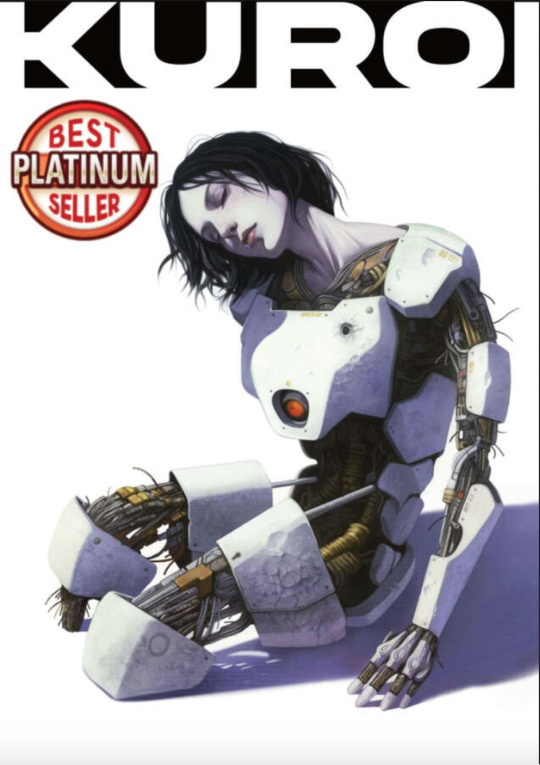

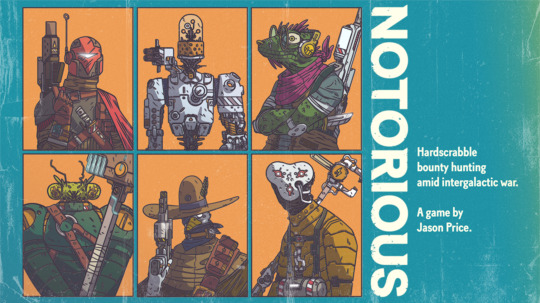
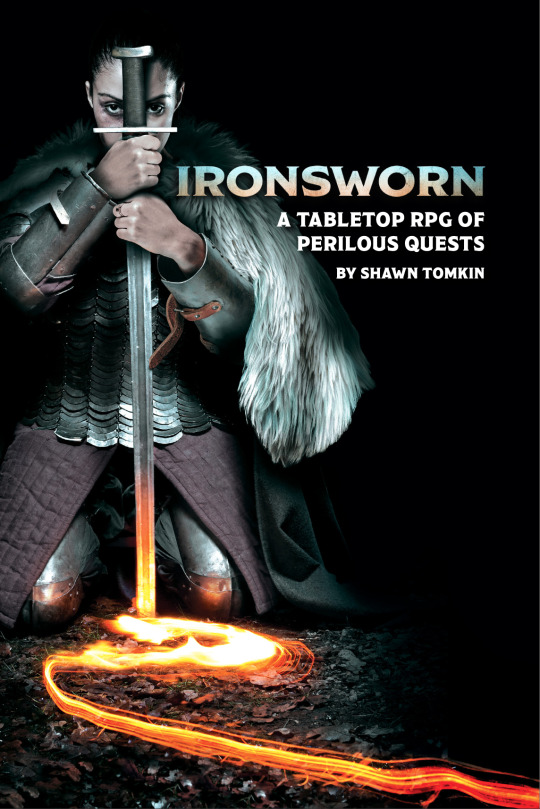
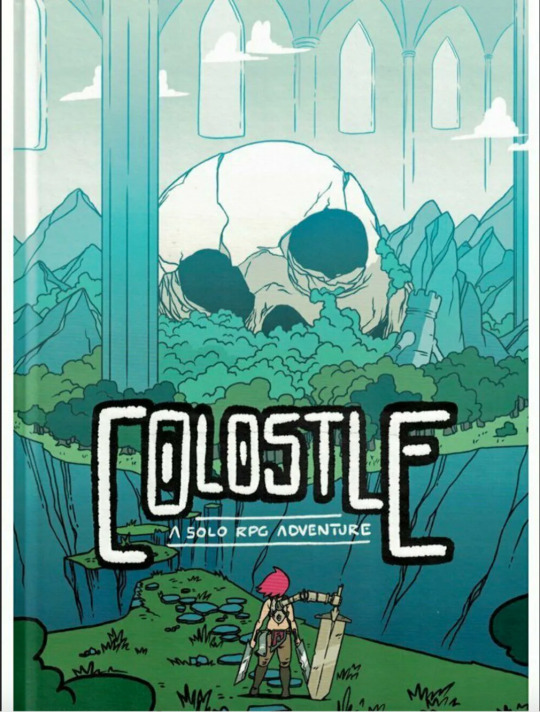
KUROI, by Candlenaut.
Kuroi is a cyberpunk setting which pays homage to the greatest giants of the Cyberpunk genre, of which the author has been a die-hard fan since the early 90s.
The game is played on a 6x6 inch grid and is a so-called micro wargame. You progress from level to level of a heavily guarded corporate building, trying to fulfill the objectives of your Heist. The game uses a unique Action roll system with two re-rolls (Yatzee style) that you must tactically manage in your turn by using these dice to buy various actions and enhance them. In the game, you can choose several ways to progress through each level, you can be stealthy or manipulate enemies or go all out with your entire arsenal.
This is a micro skirmish game, so much like D&D, your character is built with combat in mind. You play through levels, trying to get around or fight through various enemies. Your character has skills and actions, although rather than rolling for your stats, you distribute a range of numbers according to your strengths. The higher your skill points, the more resources you have, in the form of re-roll. You also have descriptive characteristics, which you can fill in as you like.You can also look at a play through of the game on the Lone Adventurer’s YouTube channel!
Anamnesis, by Sam Leigh.
You play as an individual who has woken up with memory loss. You do not remember who you are, where you are, or what you care about. As you draw tarot cards, you fill the blank spaces of your past and learn more about your present. There is no winning or losing in Anamnesis - the goal is to tell a story and discover the identity of the character you've created.
Anamnesis as a game is entirely about character creation. You use a deck of tarot cards to provide prompts: your character is someone who has to piece together pieces of their backstory slowly, as pieces of the world around them remind them of who they used to be. If you like slowly discovering a backstory using vivid imagery and symbolism, you might like Anamnesis.
Notorious, by Always Checkers Publishing.
Notorious is a sci-fi tabletop roleplaying game for one player. Play to tell stories of the Nomads; notorious bounty hunters who strike fear among the scum & villainy of the universe & follow the dubious code of the Nomad's Guild.
In the midst of an intergalactic war, you'll take on a lucrative contract from one of six factions. The job is simple: bring the target back, dead or alive—no disintegrations.
But your presence won’t go unnoticed.
Your growing reputation also attracts a series of hostiles. Suspicious locals who simply don’t like you (& their friends might not either), rival Nomads or faction agents working against you.
Notorious feels pretty fleshed out, with races, origins, load out and personalities that all come into play when you create your character. You play through a hunt, with descriptions of your mark and the planets they may be hiding out on determined through random rolls. Part of your character is randomly rolled, but these pieces feel like an outline that you can fill in.
You can check out a play-through of this game on the Lone Adventurer’s channel. If you want to follow the story of a lone bounty hunter like Boba Fett or the Mandalorian, this might be the game for you.
Ironsworn, by Shawn Tomkin.
In the Ironsworn tabletop roleplaying game, you are a hero sworn to undertake perilous quests in the dark fantasy setting of the Ironlands.
Others live out their lives hardly venturing beyond the walls of their village or steading, but you are different. You will explore untracked wilds, fight desperate battles, forge bonds with isolated communities, and reveal the secrets of this harsh land. Are you ready to swear iron vows and see them fulfilled—no matter the cost?
I don’t think Ironsworn really leans into the min-maxing that you’re looking for, but it does have a wealth of character options, especially if you consider the Starforged and Sundered Isles expansions. Characters choose three Modules that can represent your skills, tools, or companions, all of which help flesh out who you were before you started adventuring. You develop the character as you play, expanding on their abilities and forging bonds with NPCs as you complete quests. Your character isn’t a blank slate before you start, but I think much of the fleshing out happens as you roll.
Ironsworn isn’t solely a solo game, but it’s definitely designed with solo players in mind. The base game is free, so you can try it out without having to pay anything before you have to make a decision to buy any of the supplements!
Colostle, by Nich Angell.
Colostle is a solo RPG rulebook that allows you to play a single player adventure campaign through the impossible and incredible world of the Colostle.
The Colostle is a castle so big that there are oceans, mountains and cities within its rooms! There is no 'outside' to the Colostle, everything is within. And stalking these Roomlands, are the Rooks, huge walking stone castle towers that attack anything they see, but hold the Rookstones, the only source of magic in this world.
Colostle uses character classes, similar to D&D, complete with stats attached to your class choice. However, the game uses a deck of cards that you draw to help determine what happens next when you fight and/or explore. You also choose a calling; a reason why your character is questing in this gigantic castle. Compared to many other solo games that I’m familiar with, this game is much more structured and similar to traditional fantasy games, so Colostle might be worth checking out.
You can watch a how-to-play video for Colostle here!
148 notes
·
View notes
Text
THE GOLDEN UPGRADE Chapter 4: The Field Test Deployment unit: active.
PDU-412 stood motionless at the edge of the turf, black rubber suit glistening under the artificial lights. His visor flickered faintly with golden data streams as his internal systems synced with the Hive grid. Sensors locked onto his objective.

Ahead: a private sports complex. Inside, the latest batch of Golden Bros, high-performing recruits, cocky, resistant, still clinging to identity. Still playful.
One in particular: Bro Lukas. Fast, strong, loud. Still untagged. Still free.
But not for long.
Inside the dome, Lukas kicked the glowing soccer ball across the turf. It felt strange, too smooth. It shimmered even when it wasn’t in motion.
The others avoided it. He didn’t care. He was “too strong to be hypnotized.”
But the TechBall was no ordinary ball.

Threaded with micro-signal emitters, it sent out low-frequency golden waves, encoded with Hive mantras. The more it was touched, the more it bonded. The more it spun, the deeper it worked.
PDU-412 activated Protocol Echo. From across the field, he stepped forward, each footfall echoed in Lukas’ mind. The rubber-clad drone emitted a frequency of his own. It synced with the ball.
The glow intensified.
Lukas blinked. His muscles slowed. Sweat trickled down his chest, shining in the light. His breath caught. The ball rolled to his feet. And stopped.
“Join the rhythm,” a voice hummed in his skull. “Let go. No resistance. No thought. Just play. Just obey.”

He kicked again. Slower. Then stumbled. Then fell, onto his knees.
The chanting began. Not his voice. Not PDU-412’s. But a chorus inside his head:
“Obey. Obey. Obey.” “Golden glory. Hive unity. You are ready.”
The field lights dimmed.
Then golden threads slithered across his arms, liquid fabric forming new kit. Tight shorts. Shiny cleats. Gleaming jersey with a single gold spiral over the heart.
TechWear 9.4: AutoFit Gear. Responsive. Reprogrammable. Irreversible.
His eyes glazed. His smile grew. He chanted now. Louder. Joyful.
He wasn’t playing anymore. He was learning.

PDU-412 logged the success. Lukas was no longer a Bro.
He was a receiver.
The field wasn’t for competition. It was for assimilation.
Conversion efficiency: 97% New Candidate: Lukas – Status: Golden Bro (Type-B Receiver) Final broadcast sequence pending… @goldenherc9 @brodygold
Previous: Chapter 3: The Upgrade Pod Next: Chapter 5: The System Expands
They play. We program. They sweat. We signal. The game is a lie. The goal is submission.
Reblog to expand the system.
#goldentech#sportstf#soccertf#hypnoticgear#goldtransformation#fetishaesthetic#dronefield#polodrone#goldenarmy#rubberbro#techwear#submissivejock#hivemindtraining#aigenerated#goldenhive#obediencefield#golden army#male transformation#golden team#thegoldenteam#gold#hypnotised#male tf#jockification#transformation#polo drone#polo-drone-001
29 notes
·
View notes
Text
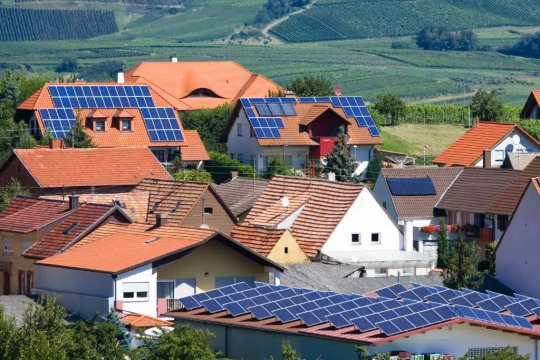
Power to the People: How Micro-Renewables Enhance Community Resilience
As billions of individuals lack electricity worldwide, micro-renewables such as small turbines and rooftop solar are powering a silent revolution. Not only are these miniature power plants eliminating energy poverty, but they are also building resilience in communities from Lagos to London.
Microgeneration refers to the production of energy on a small scale by small businesses, communities, and domestic households. It is often conducted where the energy is needed, increasing efficiency and avoiding the expense of distribution.
Some examples of microgeneration technology include micro wind turbines, solar panels, and hydroelectric. Each system converts natural energy sources such as sunlight, wind, and running water into usable electricity. The beauty of microgeneration lies in its twin benefits: economic savings and sustainability. While the initial outlay for fitting equipment like solar panels or windmills can be prohibitive, such an investment will pay dividends in reduced bills and the possibility of making money from excess power that can be fed back into the grid under systems like the Feed-In Tariff or Smart Export Guarantee.
Read more
#solarpunk#solar punk#community#renewable energy#micro-renewables#minigrids#small turbines#rooftop solar#solar power
16 notes
·
View notes
Text
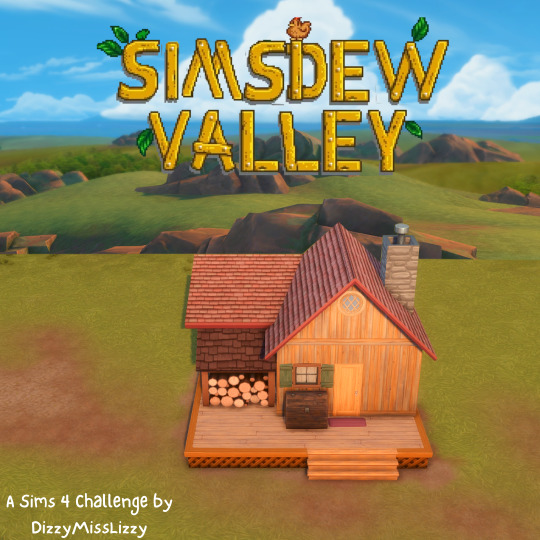
I wrote a Sims Challenge inspired by Stardew Valley!
The Simsdew Valley Challenge focuses on finishing "Bundles", upgrading your farm, raising animals and starting a family.
You can check out all the rules here
Rules include French, Spanish and Russian Translations.
You have spent your life until now as an office drone, wasting your days in a dimly lit office, when one day you get a letter. You have inherited your grandfather’s farm. You decide that the office life is not for you and you head to the valley. Armed with what little money you have and some hand me down tools you found in the house, you take on the job of restoring the farm and giving it the life it once had.
While reading through the rules, if there is something you don’t like or an element of gameplay you don’t enjoy, then don’t do it. This challenge is supposed to be fun and if something is going to make it not fun, then change it. However please do not repost my challenge rules with your changed rules and claim it as your own.
Feel free to share any content you post with #simsdewvalley and #SDVchallenge so I can see!
Before You begin:
Place/build house on 64x64 lot in Chestnut Ridge or Henford on Bagley
Only 500 simoleons to start (testing cheats on/money 500)
Game Settings:
Must play on Long lifespan or no aging as this is not a legacy challenge.
Auto Age (unplayed household) must be off if you choose no aging
Season Length: 28 Days
Fame system and NAP are optional
Default holidays are optional, but I would recommend removing Winterfest and Harvest Fest
Add Holidays if you have Seasons. All Holiday events must be completed.
Egg Festival: 13 Spring (Friday)
Egg Hunt
Give Flowers
Flower Bunny (optional)
Flower Dance: 24 Spring (Tuesday)
Romantic Spirit
Give Flowers
Optional: Host Dance party event
Luau: 11 Summer
Fire
Water Fun
Spirit’s Eve: 27 Fall
Mischief Spirit
Spooky Spirit
Trick or Treat
Wear Costumes
Festival of Ice: 8 Winter
Polar Plunge
Feast of the Winter Star: 25 Winter
Open presents
Festive Spirit
Father Winter
Give Gifts
Founding Sim:
Start by creating a Young adult sim
Traits are all up to you, however I would recommend these traits:
Loves Outdoors
Rancher (HR)
Horse Lover (HR)
Animal Enthusiast (CL)
Aspirations are determined by bundles. See Goals to choose aspirations.
Misc Rules:
Sim must go to bed by 2 am and wake up at 6am
Can only cook with items grown/produced on farm, or purchased from the store
Participation in the Finchwick Fair is optional
Home:
Get the house I made from the gallery (ID: DizzyMissLizzy #SDVchallenge) or build your own. Must not be worth more than 20k. Basic amenities only.
House Upgrades must be purchased and can be found on my gallery. You may remodel the house as you like after purchasing upgrades.
The house may be a Small, Tiny or Micro home and utilize the bonuses until you upgrade.
Must use these lot challenges:
Wild Prairie Grass Challenge (HR)
Simple Living (CL)
Wild Foxes (CL)
Off the Grid for extra challenge
Lot traits are optional, but for extra challenge don’t use any
New Sims:
You may add another sim to your household after you get married and when you have kids. No more than 4 sims in the household.
You may have no more than 2 children. They can be conceived, adopted or science babies.
Animals:
You may adopt 1 dog or cat once the challenge begins. Only 1 pet at a time (farm animals aren’t considered pets)
You may have as many farm animals as you want, but you must build a shelter or structure for each type before you can purchase the animal. (the default home for cows, llamas and chickens don’t count as shelter. Must at least be fenced in)
Livestock must be purchased as a baby if you have the option, except for horses.
You may breed your animals.
Animals you can have
Horses
Chickens
Cows
Llamas
Goats
Sheep
Bees (Bees do not need shelter but must be placed near the garden)
For additional challenge, you must purchase animals for the first time in this order
Chickens
Cows/Llamas
Sheep/Goats
Horses and Bees anytime if you can afford them
Making Money:
You are not allowed to have a job. All your money MUST come from farming,
Money Methods
Animals Products
Gardening (you can only grow in season crops, except in the greenhouse)
Nectar Making
Fishing (ponds must not be on property)
Wood Working table
Foraging
Knitting (materials must come from animals)
Cross Stitch (materials must come from animals)
Cheats/Mods:
You can not use any cheats or mods that would give you an advantage over others.
This includes money, skill, and mood cheats
You can use mods that alter schooling for children such as homeschooling mods.
You cannot use Patchy if you have Seasons.
CC is allowed, but nothing that gives extra skill or money gain
No money trash can
No wishing well
No reward potions
Reward traits are allowed and encouraged.
No Using Ranch Hands, Butlers, Maids, etc
No receiving money from phone calls.
No covered gardens aside from greenhouse
End of Challenge:
To complete the challenge, you must finish all of these before the end of your first Winter.
Goals
Must be completed by the end of Winter
Finish the Community Center Bundles
Crafts Room - Country Caretaker (Bramblewood foraging is bugged. You may cheat that part. Use mods like MCCC, UI cheats, or this cheat code: aspirations.complete_current_milestone )
Pantry- Freelance Botanist & Nectar - Reward Greenhouse (found on gallery)
Fishtank - Angling Ace
Boiler Room - The Curator
Bulletin Board - Soulmate and/or serial romantic
Vault - Fabulously Wealthy
Secret Bundle - Grilled Cheese
Get Married
Have 1 or 2 Kids
Max Skills
Cooking
Fishing
Gardening
Handiness
Nectar Making (HR)
Horse Riding (HR)
Have all farm upgrades
Upgrade 1: Kitchen
Upgrade 2: Bedroom
Upgrade 3: 2nd Bedroom
Upgrade 4: Basement
Additional upgrades are optional
Must have all farm structures
Covered stables for horses.
Garden with 20+ types of plants
Orchard with 5+ types of trees
Cowplant for funsies (must fish up or splice seed)
Fenced in pasture for cows, llamas, chickens, goats and sheep
#stardew valley#stardew#sims 4#sims 4 challenge#simsdew valley#simsdew valley challenge#dizzymisslizzy#sims gameplay challenge
23 notes
·
View notes
Text
Telling Stories to better the World
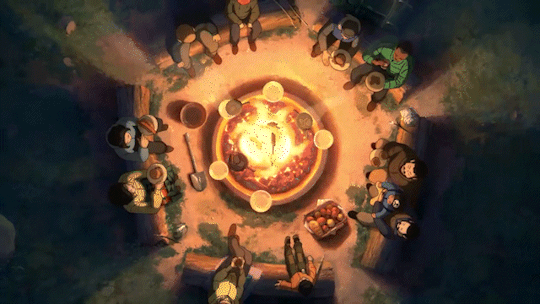
*looks on the calender* You know what time it is? Yeah, it is time for the alpaca to rave on about the power of stories once again. Because I kinda feel that we cannot talk about that enough.
Say it loud and say it clear: Stories have power over us.
The baddies kinda understand that. Which is why they use stories as propaganda tools. I mean, there is a reason why the US Military funds the Marvel movies and stuff like Top Gun. Because it is propaganda that exists to serve their goal.
And humans also have always kinda understood it. Because guess what: Fairytales existed as teaching tools. Be it to teach kids to not run into the forest at night... Or do a Beauty and the Beast and exist to teach young girls that: "Hey, your political husband might be abusive, but you can try and tame him, girl!"
A lot of oral stories have once existed for such reasons. To both teach people about the world and reaffirm a society's values. And this is still true to this day.
I have been harping on anarchist ideas vs capitalist ideas for the last few days and the entire story thing plays into this a lot.
And yeah, I gotta crap on the MCU here once more, because it kinda is the most influencial offender here. Because those people know the power of stories. Which is why in most of the MCU movies the bad guys wanna change the system - while the good guys heroically defend the status quo without ever questioning whether or not the bad guys might actually have a point in some cases. (Worst offender is obviously Falcon and the Winter Soldier.)
Given that mass media right now very much is held obviously by the capitalist class, for the most part media only rarely gets to sneak in messages that are too anti-capitalist. (Which is also, why modern Cyberpunk, especially western Cyberpunk, does not have a ton of bite going on.) And in many cases it has to be sneaky and rely on the lack of media literacy in the folks financing the movies. Like the Matrix, for example. But in that case they obviously run the risk of the viewer also not quite getting that message, if they are not primed for it.
But we do need those stories.
We need stories in which people rebel against a system and win. In which those rebels are allowed to be heroic, instead of the narrative going: "Well, sure, their goal was admirable, but we just cannot condone violence!"
We also need stories in which people live in a less hierarchical society. In which people are aiding one another. In which it is not rugged individuals saving the world, but close-knit friend groups and communities working together.
And we need stories, in which climate change is stopped in time. In which people live actually on renewables and micro grids. In which people then also live without capitalism. Because we need to learn to view that world as possible,
So, if you are a creator... You know what to do!

#solarpunk#hopepunk#lunarpunk#the power of stories#capitalist propaganda#propaganda#anarchism#fight the system#anti capitalism#change the world#save the world
125 notes
·
View notes
Text
I'm Unpeeling Myself from Big Tech!
"Unpeeling" being any act you take that limits the amount of data a large tech corporation can gather from you, decreases your reliance on products of those corporations, or increases autonomy over your technology. I'm ripping the term from a line in this review by Joanna Nelius, where she writes, "People are looking for ways to peel their eyes from their smartphones like a layer of Elmer’s glue from their hand — to remove a part of themselves that really isn’t a part of themselves." It's different than "unplugging" because the goal isn't to go off the grid, or even to limit one's technology usage. The goal, instead, is to extract from the invasive, addictive, destructive capitalist vision a set of tools that are useful to YOU.
It started when I realized I don't need a smartphone. I've deleted most social media from my phone, and the stuff I still have I prefer to check on my laptop. Not all "dumb phones" (I hate this term) offer the same features, though, so I began to think on a granular level about what I need from a cell phone. Eg, not all "dumb phones" provide MMS, but my family lives 3k miles away. I wanna still talk in the groupchat.
On the more complex end, I write on my phone. I've been using Google Docs to move seamlessly from scribbled writing drafts on my phone to formatted, finished works on my computer since I was fourteen.
Except, Google Docs is useless now. I've been unable to use it since they lowered the storage capacity. The only other cloud storage writing thingy with similar functionality is Office 365, which sucks.
Could a dumb phone with a basic "notes" feature work? Maybe, but I'd have to re-type everything to get it into a formatted document. Ideally, I'd have like, a mini-laptop just for writing - something I could fit in my pocket or in a small bag, so I could bring it to work without looking like a dick - and then, in addition, a basic phone for calls/texts/GPS stuff. But does a device this specific to my use case even exist?
Yes. Yes it does.

This is a GPD Micro PC. GPD mainly sells handheld gaming machines, though this product is designed for mobile IT professionals. It's probably too chonky for a pocket, but mark my words, I will figure out how to make it work for me.
It's stupid, but this gave me a rush. I've been struggling along, tied to the bloated corpses of three gmail accounts, for years, because I needed Google Docs for my writing workflow. But now I don't. I have the power to actually tailor my tech for my life.
By this point, I was like, alright, I don't need Google Docs anymore, I don't need a smartphone, what else? Do I need Windows? No, probably not, right? I can use Linux Mint on this new guy, especially since he'll mostly be a basic writing machine. LibreOffice is less intrusive and bloated than MS Word - a better experience for free than I'd have from the paid program. If I go all the way and install Linux, I also won't have to deal with ads in my start menu, or pre-installed spyware screenshotting my activities.
In fact, if I back everything up on an external drive, I can delete my old Google Drives and switch my main computer to Linux, too! So, I finally bit the bullet and invested in an external hard drive.
This is the problem with "product ecosystems," by the way. When one part of that ecosystem - Google Docs - fails, the whole thing collapses. All the bloat and corruption you dealt with just stops being worth it, and it's easier to make a radical change to a new system. I witnessed something similar happen with comedy tech youtuber Dankpods earlier this year, except with Apple's ecosystem: he was a lifetime Apple guy - seemingly not in a worship way, but he liked their products, and was certainly in Apple's ecosystem. Then a couple things went sour for him, and now he runs Linux.
I'm doing this for personal and ideological reasons. I'm personally sick of Clippy - I mean, Copilot - peeping in to tell me how to write what I'm writing on Office 365. I abhor the idea of paying Google for a service they offered for free until recently, knowing they can flip the script at any point. And while we're talking ideology, I'm a communist, and even though this is far from a shift everyone can make, I believe that taking any available steps towards shutting Big Tech out of our lives is a net good. If all you can do is delete Instagram, or use a screentime tracker, or switch to Firefox, do it. I'm finally in a position to make this more drastic change, and I'm excited.
Get in the weeds about how you use technology. Do you need everything at your fingertips, all the time? If not, what, specifically, do you need? Is there a way that you, now or in the future, can trim out the parts you dislike? And what can you change now?
24 notes
·
View notes
Text
The Future of Low Voltage Switchgear: What’s Next?
Low voltage switchgear plays a critical role in power distribution, ensuring safe and efficient operation across industries such as manufacturing, commercial buildings, healthcare, and renewable energy. With rapid technological advancements, the future of low voltage switchgear is evolving to meet the demands of digitalization, energy efficiency, and sustainability.

Digitalization and Smart Switchgear:
Digital technology is in fact one of the greatest revolutions of low voltage switchgear. Smart switchgear has the capability of IoT (Internet of Things) for real-time monitoring, predictive maintenance, and remote control.
Smart Low Voltage Switchgear: Market Trends and Analysis:
Real-time Data Monitoring: Sensors that conduct data collection and analysis of the voltage, current, temperature, and health of devices.
Predictive Maintenance: With a year of analysing AI-powered data, predicting failures before they happen to reduce downtime and in turn maintenance costs.
Cloud Connectivity: Operators have access to switchgear data from any location, improving remote monitoring and control.
Data Processing Power: AI integration in automation systems speeds up data processing, allowing for faster decisions.
Energy Efficiency and Sustainability:
With rising awareness around sustainability across the globe, manufacturers of low voltage switchgear are designing energy efficient solutions to minimize carbon footprints.
Sustainable Innovations in Low Voltage Switchgear:
Eco-Friendly Insulation Materials: Manufacturers are substituting SF6 (a powerful greenhouse gas) with eco-friendly options.
Low Power Consumption Designs: Designs lose energy less, leading to superior efficiency.
Integration of Renewable Energy: Switchgear is being optimized to manage both solar and wind power, ensuring that the grid runs smoothly.
Recyclable Components: Many more switchgear systems utilize recyclable materials when they reach the end of their lifecycle.
Safer and More Reliable:
Safety remains a top priority in electrical distribution systems. Future low voltage switchgear will incorporate advanced protection mechanisms to minimize electrical hazards and enhance reliability.
Upcoming Safety Enhancements:
Arc Fault Detection Systems (AFDS): These systems detect and suppress like arcs before they harm.
Self-Healing Systems: AI-based switchgear can automatically redirect electricity in the event of failures, avoiding outages.
Touch-Proof Designs: Designs that are insulated and enclosed to avoid accidental electric shock.
Remote Operation and Diagnostics: This minimizes the extent of physical manual inspections resulting in operator safety.
Modular and Compact Designs: Switchgear is getting increasingly modular and compact, as industries call for more flexible and space-saving solutions.
Features of Modular Low Voltage Switchgear:
Scalability: Switchgear can be modified or scaled up or down to meet businesses’ needs, while maintaining system efficiency.
Reduced Installation Time: Pre-configured modules simplify the process of installation, resulting in less labor costs.
The positioned components for simple replacements and upgrades.
The Rise of Solid-State Switchgear:
Industrial low voltage switchgear are mostly mechanical-latch based circuit breakers but the future lies in solid-state low voltage switchgear using semiconductor based switching technology.
Advantages of Solid-State Switchgear:
Speedy Switching: Solid-state systems work on micro seconds, making fault response time low.
Zero Mechanical Wear & Tear − Moving parts are absent, so switchgear has a longer life and better reliability.
Silent Operation: No sound that comes with a conventional electromechanical breaker
Low Maintenance: It is cost-effective owing to lower failures and servicing.
Integration with Smart Grids:
It plays a vital role in the function of smart grid infrastructure as it helps in the distribution of energy and load balancing in a seamless manner.
The Impact of Smart Grids on Low Voltage Switchgear:
Real-time Load Management: Switchgear will do real-time Load Management based on the requirement.
Self-Healing Networks: When a fault occurs, the system will redirect electricity to unaffected areas.
Cybersecurity: With the growing digitalization, manufacturers will adopt robust cybersecurity measures to prevent cyber threats.
AI and Machine Learning in the Healthcare Sector:
With the world’s transition to advanced technology, AI-powered switchgear will be the new ‘normal’ providing more automation and intelligence to power distribution.
Use of AI in Low Voltage Switchgear:
Anomaly detection: AI can find abnormal power consumption and recommend remedial measures.
Energy Forecasting — Machine learning algorithms will be used to forecast energy consumption trends, helping businesses optimize their energy consumption.
Adaptive Systems: AI will maintain optimum settings that increase performance and lifespan.
Conclusion
The future of low voltage switchgear is digital, efficient and green. Thanks to IoT, AI, solid-state technology and smart grids, these advancements will transform power distribution into a safer, smarter and more reliable system.
Adoption of Next Gen switchgear is crucial for modern enterprise to act proactively for cost efficiency and sustainability in energy usage with next gen technologies to leave the competition behind in the market.
6 notes
·
View notes
Text
Brainwaves Bios: Doctor Raymond Stantz (1984)
The Heart of The Ghostbusters Doctor Raymond Stantz, PhD

The heart of the Ghostbusters. Raymond is the one who is most interested in ghosts, and will often be the most interested in ghosts, and will often be the most excited when encountering something supernatural. He provides knowledge of folklore to compliment Egon's scientific knowledge when figuring out how to deal with a ghost.
"Everything was fine with our system, until the power grid was shut off by dickless here."
Name
Full Legal Name: Raymond Francis Stantz
First Name: Raymond
Meaning: From the Germanic name 'Raginmund', composed of the elements 'Regin' 'Advice, Counsel, Decision' and 'Munt' 'Protection'.
Pronunciation: RAY-mund
Origin: English, French
Middle Name: Francis
Meaning: English form of the Late Latin name 'Franciscus' meaning 'Frenchman', ultimately from the Germanic tribe of the Franks, who were named for a type of spear that they used.
Pronunciation: FRAN-sis
Origin: English, French
Surname: Stantz
Meaning: Variation on 'Stanz', a habitational name from places called 'Stans' or 'Stantz' in Austria and Switzerland
Pronunciation: STAN-ts
Origin: German
Titles: Doctor, Professor, Mr
Nicknames: Ray, Francine (By Venkman), Frank (By Nova)
Characteristics
Age: 32
Gender: Male. He/Him Pronouns
Race: Human (Touched by the 'Psychic Realm')
Nationality: American Citizen. Born in America
Ethnicity: White
Birth Date: July 1st 1952
Sexuality: Straight
Religion: Non-Religious (Formerly Christian)
Native Language: English
Known Languages: English, Latin, Hebrew, Greek, Spanish, Arabic, Norse, Phoenician, Chinese
Relationship Status: Single
Astrological Sign: Cancer
Actor: Dan Aykroyd

Geographical Characteristics
Birthplace: Cutchogue, Long Island, New York
Current Residence: North Moore Street, New York, New York
Appearance
Height: 6'0" / 183 cm
Weight: 200 lbs / 91 kg
Eye Colour: Heterochromatic (1 Green, 1 Brown)
Hair Colour: Brown
Hair Dye: Once dyed his hair blond in college
Body Hair: Hairy
Facial Hair: Clean Shaven
Tattoos: (As of Jan 1984) None
Piercings: None
Scars: None
Health and Fitness
Allergies: None
Alcoholic, Smoker, Drug User: Social Drinker, Smoker
Illnesses/Disorders: None Diagnosed (Autistic)
Medications: None
Any Specific Diet: None
Relationships
Affiliated Groups: Ghostbusters (Founding Member)
Friends: Peter Venkman, Egon Spengler, Winston Zeddemore, Janine Melnitz, Dana Barrett, Louis Tully (Sort-Of), Mars Teufel, Nova Teufel
Significant Other: None (Crush: Nova Teufel)
Previous Partners: None of Note
Parents: Silas Stantz (Deceased, Father), Joanna Stantz (Deceased, Mother, Née Gwerder)
Parents-In-Law: None
Siblings: Carl Stantz (36, Brother), Jean Stantz (30, Sister)
Siblings-In-Law: Nicola Stantz (34, Carl's Wife, Née Woodrow)
Nieces & Nephews: Tyler Stantz (12, Nephew), Jacob Stantz (8, Nephew), Saffron Stantz (10, Niece)
Children: None
Extras
Level of Education: Engineering PhD, Metallurgy PhD, Astronomy PhD, Chemistry PhD, History PhD, Physics PhD, Parapsychology PhD
Occupation: Ghostbuster
Employer: Ghostbusters
Expertise:
Parapsychologist
Engineering Expert
Metallurgist
Astronomer
Biologist (Micro & Marine Biology)
Chemist
Historian
Marine Spongiologist
Physicist
Architectural Knowledge
Polyglot
Occult Literature Knowledge
Faults:
Nicotine Addicted
Prone to 'Shut Down's
Can be Controlled via Twisting His Ears
Susceptible to Possession
Backstory: In his childhood, Ray Stantz went to Camp Waconda. Sitting at the campfire and roasting Stay Puft Marshmallows became one of his fondest memory. In his adulthood, Dr. Ray Stantz worked in the private sector at one point but he was not adept at producing the results they wanted. By 1984, Ray's parents passed away and he inherited the home he was born in. Ray went to work at Columbia University and studied the paranormal phenomena with Dr. Peter Venkman and Dr. Egon Spengler. Egon and Ray were usually the first to interview case subjects, even people Peter called "schizos" no matter how far-fetched their stories were.
18 notes
·
View notes
Text
PV Inverters Market Set to Surge: Global Forecast 2024-2032 Predicts Growth from $12.9B to $47.44B
The PV inverters market Growth is experiencing robust growth, driven by the escalating demand for solar energy solutions globally. Estimated at USD 12.9 billion in 2023, the market is projected to surpass USD 47.44 billion by 2032, exhibiting a remarkable compound annual growth rate (CAGR) of 18.5% during the forecast period from 2024 to 2032. This surge is primarily attributed to the increasing focus on renewable energy adoption, climate change mitigation, and the growing shift towards decarbonization across industries.
Download Sample Pages: https://www.snsinsider.com/sample-request/1336
A key factor driving this growth is the variety of PV inverter types available, including central, string, and micro inverters, each designed to meet specific power requirements. Central PV inverters, typically used in large-scale solar farms, dominate the utilities sector, while string inverters are favored in both residential and commercial applications for their flexibility and ease of installation. Micro inverters, known for optimizing energy output at the panel level, are gaining traction in the residential sector, particularly in regions where rooftop solar systems are becoming more prevalent.
The market is also categorized by product type, including central, string, micro PV inverters, and others, each contributing significantly to the overall market size. Moreover, advancements in smart grid technology and energy storage systems are expected to boost the integration of PV inverters into energy management systems, improving grid stability and energy efficiency.
Another driving force is the segmentation by application, which covers residential, commercial & industrial, and utility sectors. The residential sector is witnessing rapid growth due to declining costs of solar panels and increased government incentives, while commercial and industrial applications are expanding as businesses seek cost-effective and sustainable energy sources. Utility-scale projects continue to be a major contributor, especially in regions with vast solar energy potential.
Buy Now: https://www.snsinsider.com/checkout/1336
In terms of connectivity, the market is divided into standalone and on-grid systems. On-grid PV inverters are prevalent in regions with well-established grid infrastructure, while standalone systems are gaining traction in remote areas and developing regions.
Geographically, the Asia-Pacific region is leading the market, driven by large-scale solar projects in countries like China, India, and Japan. North America and Europe are also significant players, fueled by government policies and incentives promoting renewable energy adoption. As more regions invest in solar infrastructure, the PV inverters market is expected to witness unprecedented growth.
About Us:
SNS Insider is one of the leading market research and consulting agencies that dominates the market research industry globally. Our company's aim is to give clients the knowledge they require in order to function in changing circumstances. In order to give you current, accurate market data, consumer insights, and opinions so that you can make decisions with confidence, we employ a variety of techniques, including surveys, video talks, and focus groups around the world.
Contact Us:
Akash Anand – Head of Business Development & Strategy
Phone: +1-415-230-0044 (US) | +91-7798602273 (IND)
2 notes
·
View notes
Text
How To Go Off Grid Now With No Money
In today’s fast-paced world, the concept of going off-grid and living a more ecojoyful and self-sufficient lifestyle has gained tremendous popularity. However, many individuals believe that making such a significant lifestyle change requires a considerable amount of money. The truth is, with creativity, resourcefulness, and determination, it is entirely possible to transition to an off-grid lifestyle with little to no financial investment. This guide will walk you through practical steps to achieve this dream without breaking the bank.
1. Finding Free or Affordable Land
One of the biggest challenges in going off-grid is securing a piece of land to call your own. Fortunately, there are ways to acquire land without a hefty price tag.
Seeking Out Land Grants and Donations
There are organizations and local governments that offer land grants or donations, particularly in rural areas that are looking to attract new residents. These programs often require you to commit to living on the land for a set number of years and contributing to the local community, which can be a win-win if you're serious about an off-grid lifestyle.
Homesteading and Land Sharing
Another option is to connect with other off-grid enthusiasts who may be willing to share or rent out a portion of their land. This arrangement can reduce your costs significantly and allow you to benefit from the shared knowledge and resources of a community.
Squatting and Adverse Possession
While not the most traditional route, squatting on unused land is an option that some have pursued. Over time, with the proper legal understanding, this can lead to adverse possession, where you can gain legal ownership of the land. This approach requires thorough research into local laws and a willingness to navigate potential legal challenges.
2. Building a Shelter with Recycled Materials
Constructing a shelter doesn’t have to be an expensive endeavor. With the right approach, you can build a comfortable home using recycled and natural materials.
Utilizing Reclaimed Wood and Pallets
Reclaimed wood and pallets are often available for free or at a low cost from construction sites, businesses, or online marketplaces. With some basic carpentry skills, these materials can be transformed into a sturdy and ecojoyful off-grid home. Pallets, in particular, are versatile and can be used for everything from walls to furniture.
Earthships and Cob Houses
Earthships and cob houses are types of sustainable architecture that use natural and recycled materials like earth, clay, and glass bottles. These structures are highly efficient, insulating, and can be built with little to no money. The building process can be labor-intensive, but with the help of volunteers or community members, it’s a feasible option.
Alternative Shelters
Consider unconventional shelters like yurts, shipping containers, or tiny homes on wheels. These can often be sourced affordably and adapted to off-grid living. Yurts and tiny homes offer mobility, while shipping containers provide durability and a solid foundation for a permanent residence.
3. Harnessing Free or Low-Cost Energy Sources
Living off the grid means generating your own power, but this doesn’t have to be expensive. There are various methods to harness energy without spending a fortune.
Solar Power on a Budget
Solar panels are a common choice for off-grid energy, but new systems can be costly. Instead, look for used or discounted solar panels online or through local classifieds. DIY solar panel kits are another budget-friendly option, allowing you to build your own system at a fraction of the cost.
Wind Power
If you’re in a windy area, consider building your own wind turbine. There are many tutorials available online that guide you through the process using inexpensive materials. Wind power can complement solar energy, providing power during cloudy or stormy weather.
Micro-Hydro Power
For those with access to a flowing water source, micro-hydro power is an efficient way to generate electricity. Building a small-scale hydroelectric system can be done with minimal investment, and it provides a consistent power supply, especially during the night or in winter months.
4. Sourcing Food Sustainably and for Free
Growing your own food and foraging are key components of off-grid living. With some planning and knowledge, you can sustain yourself without spending much on groceries.
Starting a Garden with Seed Swaps and Cuttings
Starting a garden doesn’t require purchasing expensive seeds or plants. Participate in local seed swaps, where gardeners exchange seeds and cuttings for free. You can also propagate plants from kitchen scraps, such as potatoes, onions, and herbs, to kickstart your garden.
Foraging and Wildcrafting
Foraging for wild edibles is an excellent way to supplement your diet. Learn about the local flora and fauna in your area to identify edible plants, fruits, and mushrooms. This not only provides free food but also helps you connect with nature on a deeper level. Wildcrafting, or harvesting plants for medicinal or culinary purposes, can also be an essential skill in off-grid living.
Raising Livestock on a Shoestring Budget
If you have space, consider raising small livestock like chickens, rabbits, or goats. These animals are relatively low-cost to maintain and provide a steady supply of eggs, meat, and dairy. You can often acquire animals for free through online ads or by connecting with local farmers looking to downsize their flocks or herds.
5. Water Collection and Conservation
Access to clean water is essential for off-grid living, and with a bit of ingenuity, you can secure a water supply without relying on municipal systems.
Rainwater Harvesting
Rainwater harvesting is one of the most straightforward and cost-effective methods of collecting water. By setting up a simple gutter and barrel system, you can collect and store rainwater for drinking, cooking, and irrigation. Ensure that you have proper filtration and purification systems in place to make the water safe for consumption.
Using Natural Water Sources
If you live near a natural water source, such as a river, lake, or spring, you can set up a gravity-fed water system. This method requires some initial work to install pipes and filters, but it provides a reliable water supply with minimal ongoing costs. Be sure to check local regulations regarding water rights before using natural sources.
Water Conservation Techniques
To minimize your water usage, implement water conservation techniques such as greywater recycling and composting toilets. Greywater systems reuse water from sinks and showers for irrigation, reducing the need for fresh water. Composting toilets convert waste into compost, eliminating the need for a septic system and conserving water.
2 notes
·
View notes
Text
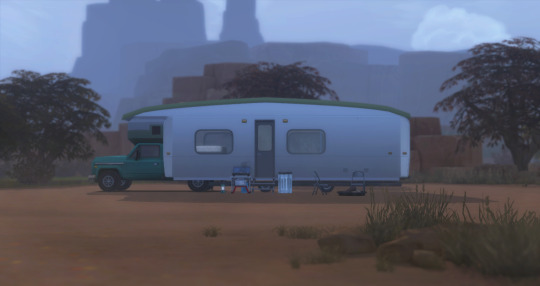
Gameplay notes on a broken, stinky camper:
They haven’t set off on their adventure quite yet, by the way. There’s a bit more story to go still. But this is a glimpse into their future to show off the camper, since I need an entire empty lot to park this thing on, and the camper shown in the previous story scenes is just deco.
Here is the camper build that they’ll actually live in. It’s a decent sized class-C motorhome. As Jordan said, it’s not really one of those cute little renovated #vanlife campers that Ingrid has her heart set on. (Like this one <- I am a total geek over this woman’s van life channel, lol!)
But maybe Ingrid will get hers someday.
This camper is old and run down, definitely in need of some renovation. Jordan is a handy guy, so I have no doubt he’ll keep it running. But creative or stylish, he is not. So he’s probably quite happy to make it smell better and just leave it be.
It’s off-grid, and doesn’t currently have any power or water capabilities, but he is welcome to upgrade those systems when he’s ready.

It’s off-grid, and a micro home on 32 squares. (33, actually, being 3x11, and I cheated out a block from the bathroom so it could remain in the smallest tier. 😉 )
I haven’t played with either of these lot types in gameplay before, and I’m super excited to try them! I’m also looking forward to the gameplay of bringing this camper to different locations and playing in some towns that I don’t normally play. But it’s a bummer that, more often than not, I’ll have to bulldoze an entire building to place it somewhere.
(OMG give us world editing tools!!!)
The lot challenges are filthy, gremlins, and creepy-crawlies. And because it was said to be very stinky in the story, I placed a few of these apartment problem stink clouds around to pop up and give them a bad surprise from time to time.
The whole camper, not counting the lot value of wherever it’s placed, is around $7000. Neither of them paid that much for it, or even have that much money to their names. I keep my sims broke, lol! But I do have a kind of personal gameplay rule that my sims can get a bonus “kaching” for each apartment problem or lot challenge they add, to help out with the purchase price. Because in game, lot challenges don’t make the lot any cheaper, even though they kind of should, in my opinion.
Then they would have to pay $1000 in “repairs” to get rid of the lot challenge or apartment problem, if they ever decide to.
(Sadly, I suspect my apartment problems are about to totally break with the new For Rent pack we’re getting, and I’m not sure I have the brain space or ability to fix them this time. Oh well, we had a good run with them, didn’t we? Hopefully someone with more skills and time can pick up the torch.)
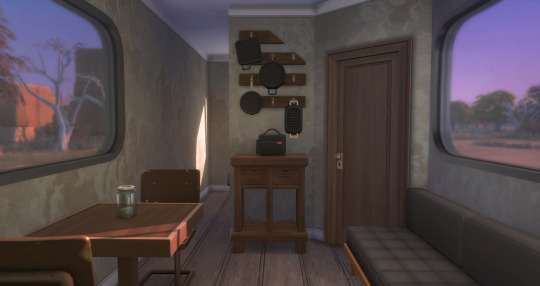

Jordan imagines renovating this back room with a couple of bunk beds for his boys, for the hopeful occasion that Colette lets them come out to visit.
So, they’ll take this thing to a few locations on their way out to California, and then in a couple weeks, Jordan will end up in Sierra Nova to meet up with Maya for the climbing club she hosts through Tyler’s adventure park. The plan is that they’ll train for a season in Sierra Nova, then travel to Komorebi to train further and then attempt to summit, which is another bit of gameplay I haven’t tried before.
I am not going to attempt to wrangle any sort of road trip driving shots with this thing, or the deco object, either. We will use our imaginations!
(Oh, but how cool would a cars/road trip pack be, where we could own a camper and drive it from place to place? But I bet even if they made a pack like that, the campers would be rabbit holes like the tents are.)
7 notes
·
View notes